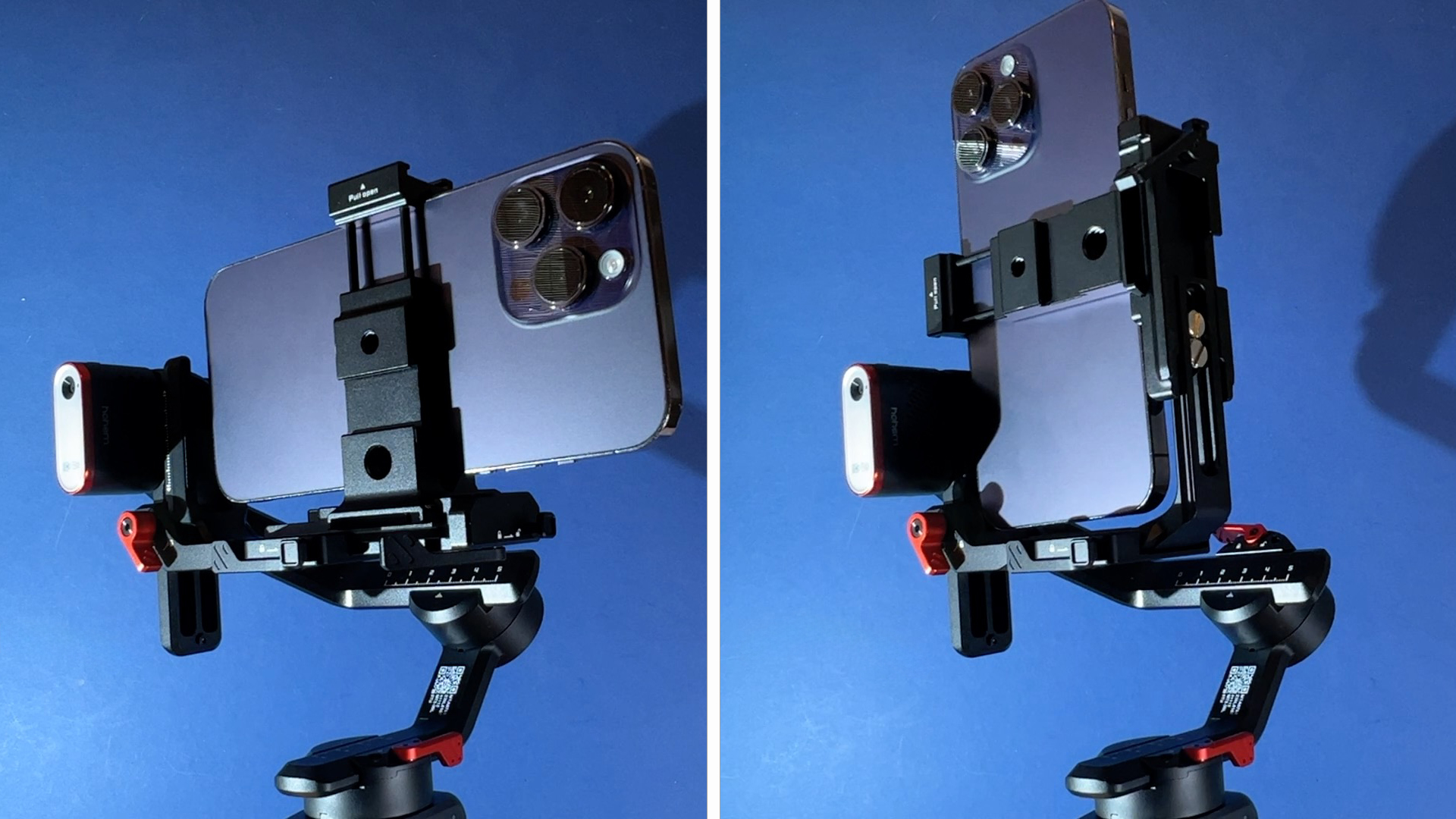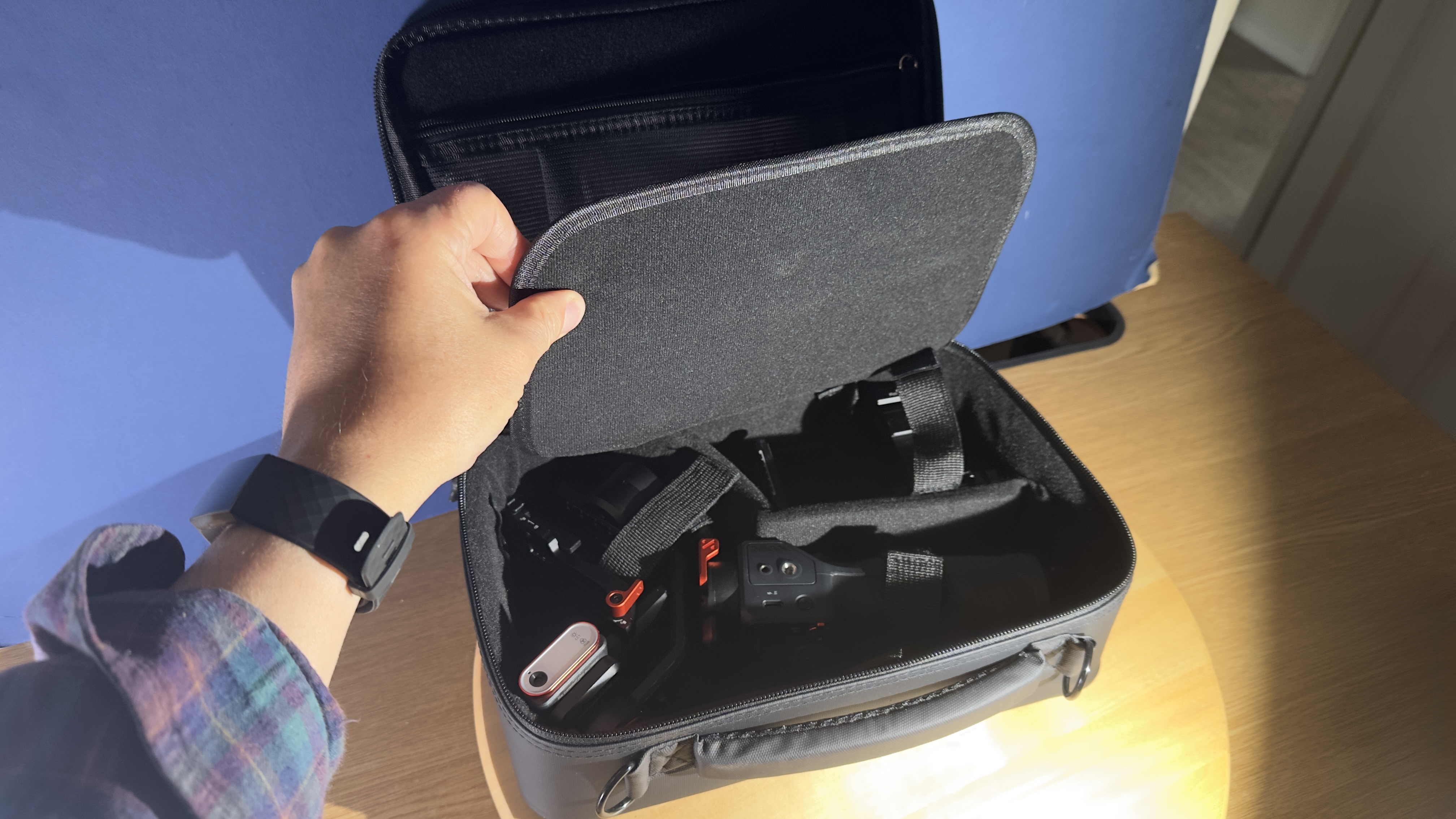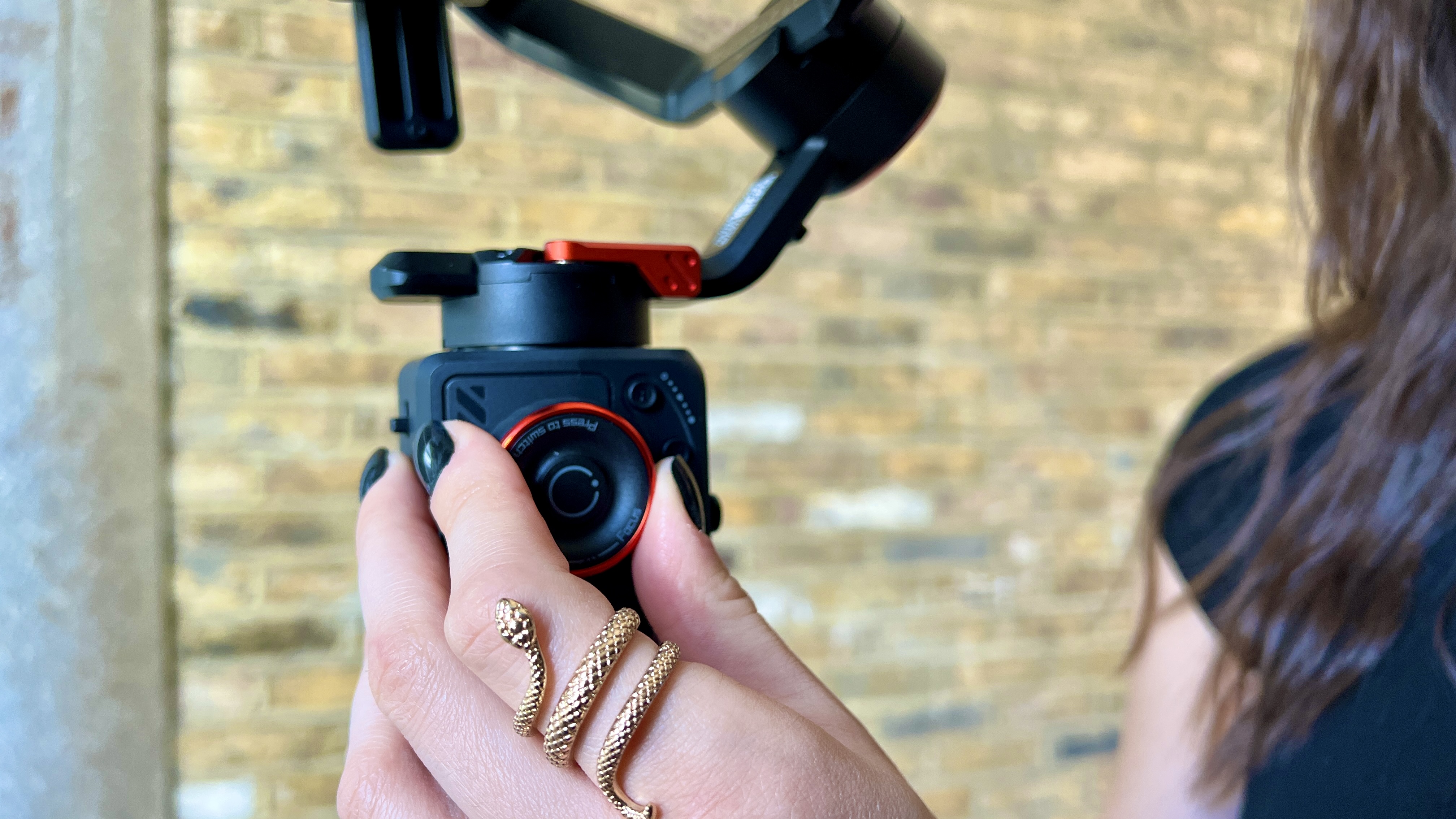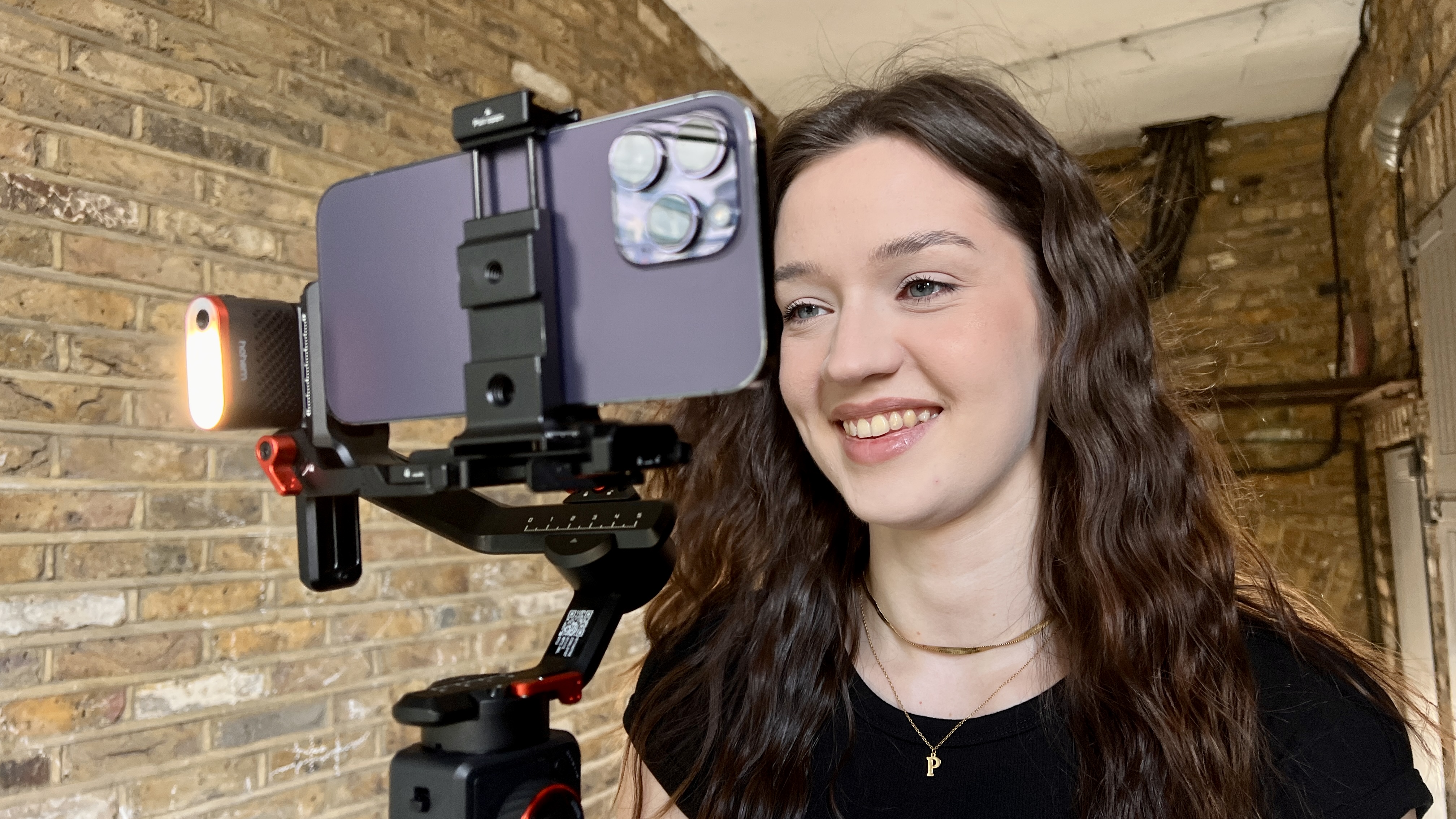
These digital days most action cameras and smartphones use software algorithms to stabilize handheld footage. Devices such as the iPhone 14 Pro Max also use a mechanical optical image stabilization system to iron out handheld shakes and wobbles. So do you need to cough up your hard-earned cash to buy a gimbal like the Hohem iSteady MT2? If you’re a serious videographer who wants to add some creative camera moves to their repertoire then my answer is a definite ‘yes’. The iSteady M2 does much more than simply keeping your footage looking smooth and steady as I’ll explain…

Hohem iSteady MT2: Specifications
Weight: 653g
Payload: 1.2kg
Main material: Aircraft Grade Aluminum & High-Performance Composites
Camera Width: 60mm~97mm
Tilting range: 290°
Rolling range: 200°
Panning range: 360 °
Battery Life: Up to 17hours
Hohem iSteady MT2: Key Features
The iSteady is a typical 3-axis gimbal that enables your smartphone, action camera, or mirrorless camera to perform professional-looking camera moves such as pans, tilts, rolls, and also Steadicam smooth tracking and dolly shots. Thanks to an attachable mini tripod the iSteady can also become an autonomous camera operator. Simply pop the tripod-mounted gimbal on the ground and set the Hohem Joy app to Gesture control. You can then use a hand signal to trigger the gimbal to follow your every move as you walk and talk freely on location. It will even tilt down to keep you in the shot if you crouch. Another hand gesture will cause the gimbal to stop following you and the recording will be saved. Check out our supporting video to see this cool feature in action.
The Hohem Joy app enables you to unleash a range of creative shooting modes such as Inception mode. This causes the gimbal to position the camera horizontally and rotate it through 360º to capture the types of shots made popular by the movie Inception. We had fun with this mode on our test shoot as you can see from our video. You can also trigger Inception mode by tapping the Mode button three times. The mode button will also toggle through classic gimbal shooting modes such as PTF (Pan, Tilt, Follow), POV (Point of View), and L (Lock).

The Hohem Joy app is very handy, though you can use the gimbal while filming in other apps such as the iPhone’s Camera app. This enables you to shoot using the iPhone’s Cinematic mode (which you couldn’t access if you were filming in the Hohem Joy app.) However, if you shoot in your smartphone’s native app you won’t have access to the Hohem Joy app’s motion tracking features.
This problem is solved by the purchase of an additional Fill Light with an AI Vision Sensor. The sensor clips onto the MT2 gimbal magnetically. You can then use gesture control to make the gimbal follow your every move without having to operate via the Hohem Joy app. If you press the physical control dial’s button on the side of the gimbal you can activate the sensor’s fill light and then rotate the control dial to adjust brightness, color temperature, and even mimic colored gels by adjusting RGB values.

Another key feature is the iSteady’s quick-release plate. I tend to shoot video in horizontal landscape mode so my footage will fill a widescreen TV, but if I did have a burning desire to quickly capture a vertical portrait-oriented clip for an Instagram reel I could slide the l-shaped bracket out of the gimbal and then re-insert it in a vertical orientation (as you’ll see from our supporting video).
Hohem iSteady MT2: Build & Handling
The iSteady has a tactile pistol grip which has a ribbed surface that gives you a strong purchase on the gimbal. The three-axis arms and motor housings are constructed from aircraft-grade aluminum which gives the gimbal a reassuringly solid feel (which is reflected in its relatively expensive price).
The control dial on the side has a ribbed rubber ring that makes it easy to rotate with precision. This enables you to perform operations such as pulling focus when using the Hohem Joy app. When using the app you can also take advantage of the physical zoom dial below the OLED screen to re-frame from a close to wide composition. You can also re-assign this dial to pull focus instead. The OLED screen gives you useful information such as the current shooting mode or the color temperature of the optional fill light.

One unusual feature that I’ve not encountered on a gimbal before is the option to fine-tune the angle of your smartphone’s default tilt angle by manually pulling the motor into the desired position. When you hold the smartphone at the desired angle for two seconds the tilt motor remembers this position. This goes against my natural instincts to manually apply pressure to a gimbal motor but the technique works without harming the motor. You can also of course manually position the tilt axis using the more conventional approach of pushing the joystick up or down.

Hohem iSteady MT2: Performance
As you’ll see from our supporting video the iSteady performed relatively well on location. My model Paulina had no trouble activating the Hohem Joy app’s face-tracking feature using gesture control and it caused the gimbal to follow her every move (even when her face turned away from the camera). But when I recorded my intro to the supporting video the Hohem Joy app struggled to follow me. I think this was because my face was backlit against a bright white sky. However, by clipping the magnetic AI tracker to the gimbal I was able to get the gimbal to pan and tilt to follow me while filming in the iPhone’s native Camera app.
Confusingly you need to use different gestures to make the gimbal auto-track you when using the app or the AI sensor. The sensor requires an OK gesture to get started. The app requires you to make a 'Victory V' style gesture to start auto-tracking. Both the app and the AI sensor are happy with a raised palm to stop the tracking.
One downside of the AI sensor is that it won’t start or stop a recording - you have to remember to tap the record button in the camera app of your choice. If you use gesture control in the Hohem Joy app then it will start and stop recording as well as tracking you.
This is the eleventh gimbal I’ve tested for Digital Camera World and I thoroughly enjoyed using the iSteady MT2 to capture a variety of smooth pans, tilts, and tracking shots while filming actress Paulina Cherry walking through a crowded city location. The additional Inception mode also inspired me to shoot a couple of cinematic rotating angles that I enjoyed cutting together in Final Cut Pro.
The Hohem Joy app is packed full of social media pleasing tricks such as a Dolly Zoom. This attempts to mimic the elastic spacial distortion caused by zooming in on a subject while tracking away from them. I tried using this mode five times without capturing a convincing dolly zoom, so I’ll file that under 'gimmick'. However, the CloneMe mode was excellent. This causes the gimbal to pan and take three separate shots. It then stitches the shots seamlessly together. This gave me the idea of capturing my actress having a row with herself which was fun to shoot and the result looks great, so that creative panorama went straight up on my social media feeds.

Hohem iSteady MT2: Verdict
The Hohem iSteady MT2 is relatively expensive when compared with a similar smartphone gimbal such as the Zhiyun Smooth Q4. Both of these gimbals feature the option to track a subject via their supporting app and you can also use a physical dial on each gimbal to zoom in or out. They both feature a magnetic fill light attachment too.
However the Hohem iSteady MT2’s black and orange aluminum body looks and feels much more like a professional gimbal compared with the light grey plastic body of the Smooth Q4, and this quality and design is reflected in the higher price. The iSteady’s magnetic AI sensor also enables you to track a subject using your smartphone’s native camera app (whereas you need to use the Smooth Q4’s Zy CaMi app to perform object tracking).
Read more: find the best gimbal for steadying your smartphone footage with our guide to the best smartphone gimbals, or to step up your content production check out our guide to the best DSLR gimbals for mirrorless and SLR cameras.







